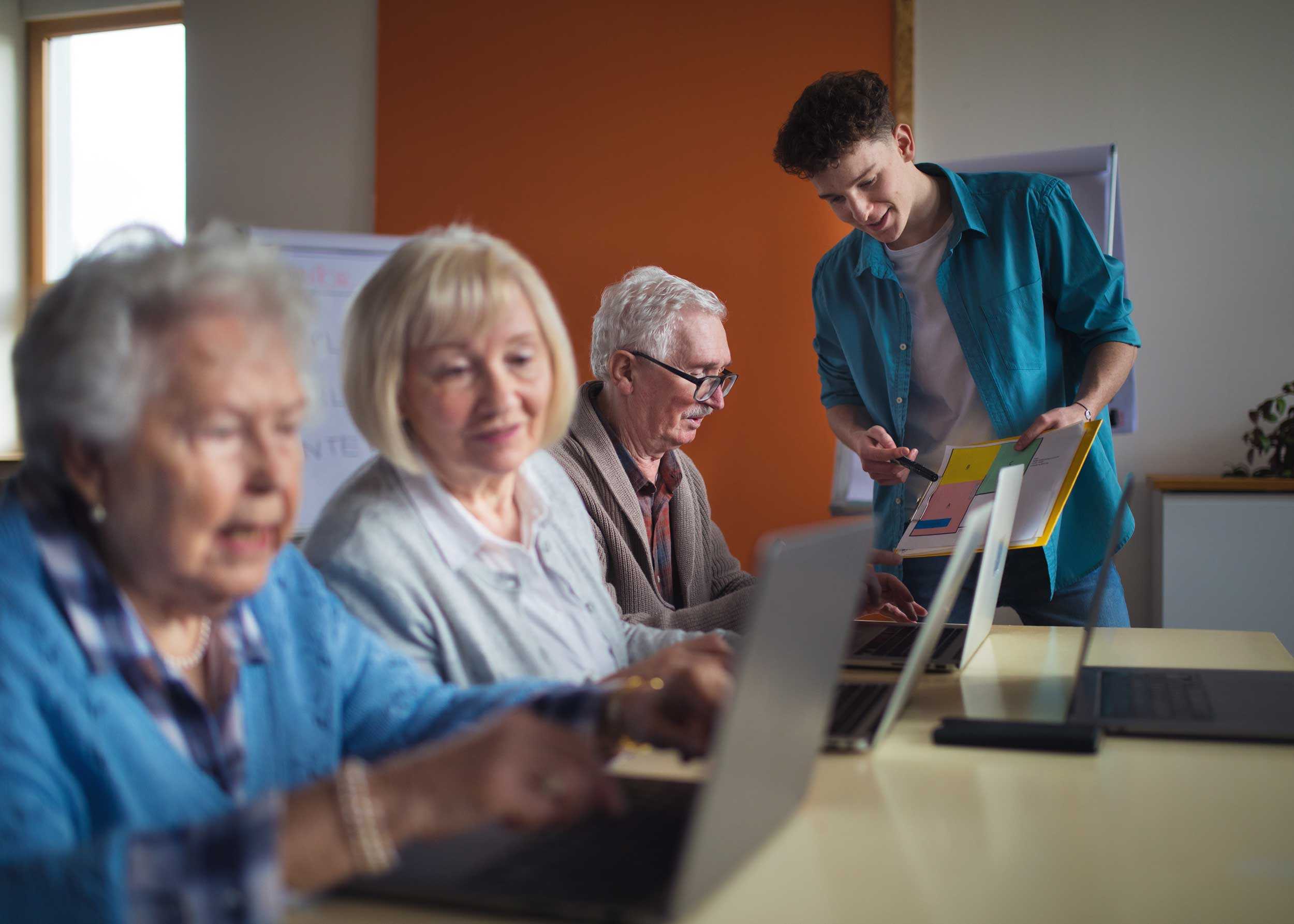Technology can lead to inclusion, but also exclusion
As the world around us becomes more digital, we often hear about how technology can be used to increase inclusion. However, according to Margunn Aanestad, professor in e-health at the University of Agder, technology can also increase exclusion. A report from the Norwegian Institute for Adult Learning showed that roughly 600 000 Norwegians are non-digital, and at risk of being excluded from the digital society.

This is a summary of a webinar that was organized in April 2022: "Digital healthcare for all - what does it take?"
The elderly is the biggest group of non-users and are also those with the weakest skills. So, what can be done to prevent the elderly and other vulnerable groups from being excluded?
The Norwegian government has created a national strategy called “Digital for life”, which aims to increase the populations digital skills. Aanestad says that this is smart, as what “being digital” today means something completely different than what it did ten years ago; now you need internet access, the necessary equipment, basic digital skills, and the ability to judge what information is real or not.
Aanestad also warns against idealizing the digitally competent person, as she says this will also lead to exclusion.
Another important way of ensuring that people don’t end up excluded from the digital society is through universal design, says Kristin Fuglerud, Academic Director of Digital Inclusion at the Norwegian Computing Center. This means that something is designed so that it can be understood and used by as many people as possible.
Fuglerud tell us that even though universal design is required by Norwegian law, there are still many barriers for e-health solutions. In many cases, universal design is simply not implemented, and this can be because the language used it too difficult for users to understand, or that the solution is too complex and frustrating to use, or that the users simply don’t have the digital skills required to use the product.
One example of this process, and a solution that aims to help people with partial vision is the Ezismart – a phone with large buttons that make it easy for the user to see what to press. However, learning to use the Ezismart was not easy, both independently or with others. The project recruited students from a local secondary school taking the elective, thinking that they would understand the technology immediately, and help motivate the users to use the technology. However, the students also had trouble understanding it.
Kristin Kjæret, is an adviser at The Norwegian Association of the Blind and Partially Sighted, and she says that universally designed technology for blind and partially sighted people is very important, as 50% of all blind people are lonely. As loneliness is connecting to health and quality of life, and therefore it is highly important to improve social participation and access to communication for these groups.
The elderly is a vulnerable group among the blind and partially sighted as well, and Kjæret says that if these people are to be independent and live at home for longer, then they need training in digital skills long before they need and are dependent on them.
What Kjæret says can be taken away from this experience, is that if people are going to learn how to use technology, then they need people who are trained properly to show them how. Unfortunately, in many cases this does not happen. One example of this is municipalities: They are responsible for making sure that everyone gets training in digital skills, but far too often, this training is not offered.
The message that Aanestad, Fuglerud and Kjæret want the audience to take away from the webinar is that it is vital that people get training in digital skills before they are dependent on technology, and that we should all be conscious as to how we use technology, as we are also responsible for making sure that it will be designed in a way that is user-friendly to everyone.
Link to the webinar:
"Digital healthcare for all - what does it take?" (Click on settings, to get English subtitles)